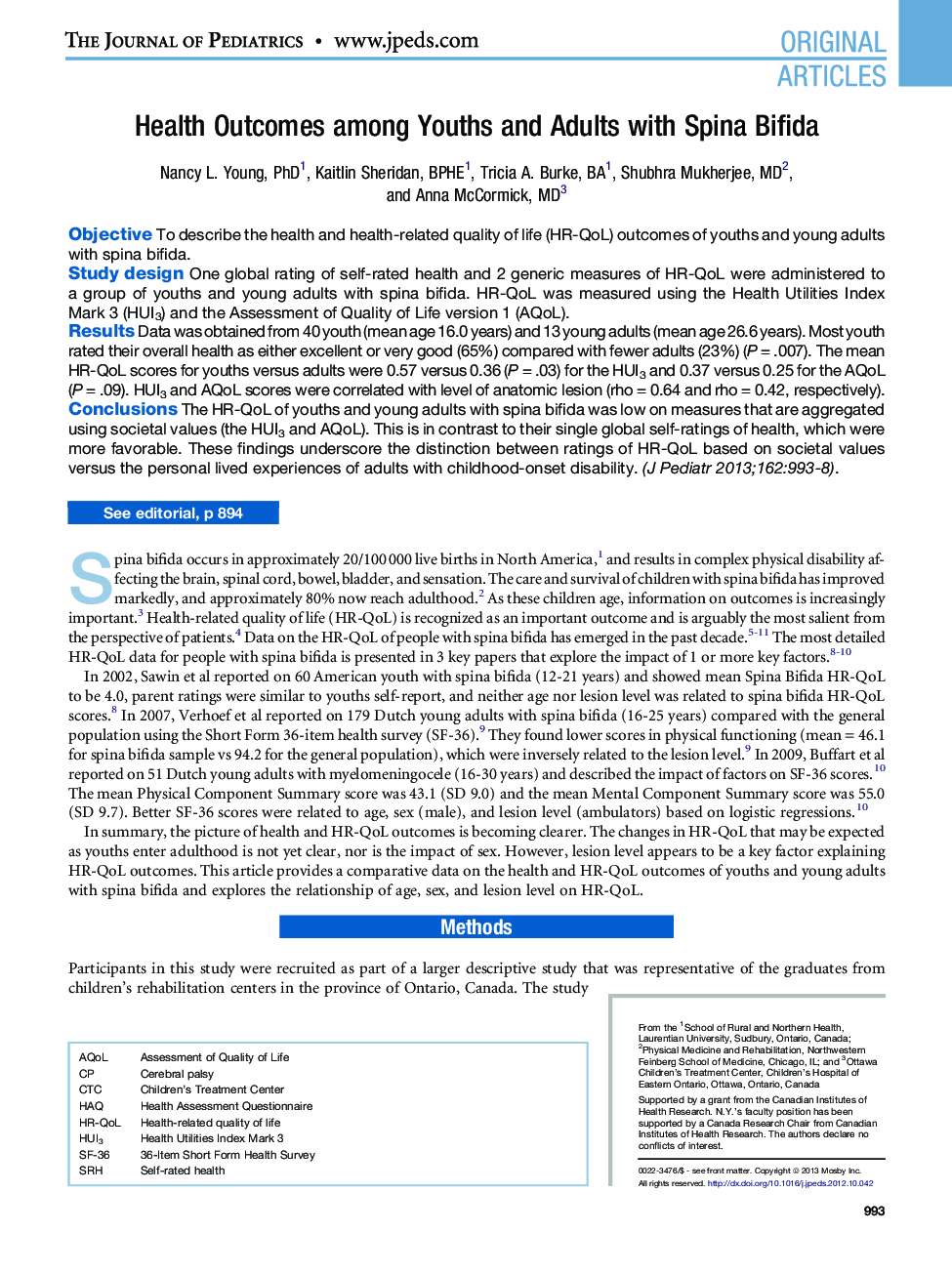| Article ID | Journal | Published Year | Pages | File Type |
|---|---|---|---|---|
| 6223695 | The Journal of Pediatrics | 2013 | 6 Pages |
ObjectiveTo describe the health and health-related quality of life (HR-QoL) outcomes of youths and young adults with spina bifida.Study designOne global rating of self-rated health and 2 generic measures of HR-QoL were administered to a group of youths and young adults with spina bifida. HR-QoL was measured using the Health Utilities Index Mark 3 (HUI3) and the Assessment of Quality of Life version 1 (AQoL).ResultsData was obtained from 40 youth (mean age 16.0 years) and 13 young adults (mean age 26.6 years). Most youth rated their overall health as either excellent or very good (65%) compared with fewer adults (23%) (P = .007). The mean HR-QoL scores for youths versus adults were 0.57 versus 0.36 (P = .03) for the HUI3 and 0.37 versus 0.25 for the AQoL (P = .09). HUI3 and AQoL scores were correlated with level of anatomic lesion (rho = 0.64 and rho = 0.42, respectively).ConclusionsThe HR-QoL of youths and young adults with spina bifida was low on measures that are aggregated using societal values (the HUI3 and AQoL). This is in contrast to their single global self-ratings of health, which were more favorable. These findings underscore the distinction between ratings of HR-QoL based on societal values versus the personal lived experiences of adults with childhood-onset disability.
